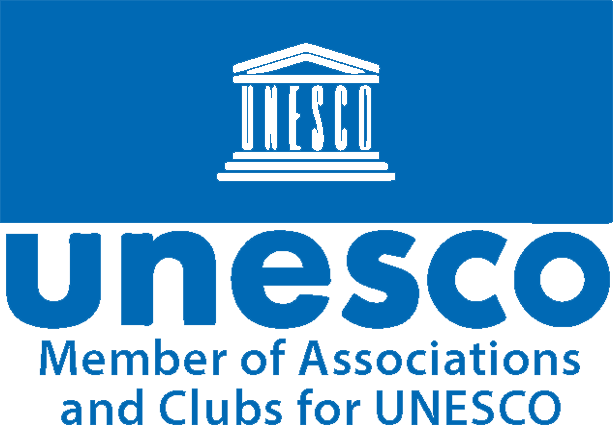UNESCO
UNESCO is the United Nations Educational, Scientific, and Cultural Organization. It aims to promote peace through international cooperation in education, science, and culture. UNESCO’s programs support sustainable development goals established and defined by the UN General Assembly.
Vision
The political and economic measures taken by governments alone are insufficient to ensure sustainable and unbiased support for all people worldwide. Peace must be grounded in dialogue and mutual understanding, building on the intellectual and moral solidarity of humanity.
In this spirit, UNESCO creates and expands educational mechanisms to help people live as global citizens free from hatred and intolerance. UNESCO works to ensure every child and citizen has access to quality, equitable education. By promoting cultural heritage and the equal dignity of all cultures, UNESCO strengthens bonds among nations. UNESCO advances scientific programs and policies as foundations for development and cooperation. It stands firmly for freedom of expression as a fundamental right and a cornerstone of democracy and development. Acting as a laboratory of ideas, UNESCO assists countries in adopting international standards and implementing programs that encourage the free flow of ideas and the sharing of knowledge.
UNESCO’s founding dream emerged in response to World War II, marked by racial violence and anti-Semitism. Seventy years and many struggles for freedom later, UNESCO’s mission remains as relevant as ever. Cultural diversity is under siege, and new forms of intolerance, denial of scientific facts, and threats to freedom of expression challenge peace and human rights. In response, UNESCO reaffirms its humanistic missions of education, science, and culture.
History of UNESCO
In early 1942, during the war, European governments opposing Nazi Germany and its allies convened in London for the Conference of Allied Ministers of Education. Although World War II had not yet ended, these countries sought ways to rebuild their educational systems after peace was restored. This project quickly gained momentum and led to a global draft proposal. New governments, including the United States, decided to join them. The Conference of Allied Ministers of Education proposed that a United Nations conference be held to establish an educational and cultural organization from November 1 to 16, 1945, in London. As the war neared its end, the conference brought together representatives from forty-four countries, who resolved to establish an organization embodying the culture of genuine peace. They envisioned the new organization as fostering “the intellectual and moral solidarity of humanity” to prevent another world war.
UNESCO Headquarters
The main building, located at Place de Fontenoy in Paris, which serves as UNESCO’s headquarters, was inaugurated on November 3, 1958. The innovative Y-shaped design was conceived by three architects of different nationalities under the guidance of an international committee. The entire building, nicknamed “the three-pointed star,” is supported by seventy-two concrete pillars. Known worldwide for both its architectural significance and as the home of UNESCO, three additional buildings complete the headquarters. The second building, often called the “Accordion,” houses an egg-shaped hall with a copper-paneled ceiling where joint General Assembly meetings are held. The third structure is cube-shaped, while the fourth structure is a two-story administrative building located below street level, surrounded by about six small courtyards. These buildings, showcasing numerous remarkable artworks, are open to the public. Upon the approval of architectural plans for Place de Fontenoy, UNESCO commissioned several prominent artists to create works to adorn the premises. In some cases, the purpose of these works is to inspire the peace that UNESCO seeks to establish and uphold worldwide. Over the years, additional pieces have been added, some gifted by various member countries. Renowned artists such as Picasso, Bazaine, Miró, Tàpies, Le Corbusier, and many others, both famous and lesser-known, have contributed to this global museum that reflects the diversity of artistic creation across the world.
General Conference
The General Conference consists of representatives from UNESCO’s member states. Held every two years, it brings together member and associate member countries, along with observers from non-member countries, intergovernmental organizations, and non-governmental organizations (NGOs). Each country, regardless of size or budget contribution, has one vote.
The General Conference sets UNESCO’s policies and main lines of work. Its responsibilities include establishing UNESCO’s programs and budget, electing members to the Executive Board, and appointing the Director-General every four years. The working languages of the General Conference are Arabic, Chinese, English, French, Russian, and Spanish.
Executive Board
The Executive Board ensures the overall management of UNESCO. It prepares the agenda for the General Conference and oversees the implementation of its decisions. The duties and responsibilities of the Executive Board are primarily derived from the statutes, rules, or directives established by the General Conference.
Every two years, the General Conference assigns specific tasks to the Executive Board. Additional roles stem from agreements between UNESCO and the United Nations, UN specialized agencies, and other intergovernmental organizations.
The General Conference elects fifty-eight members to the Executive Board, with selections based largely on the cultural diversity they represent and their geographical origins. Skilled negotiations are sometimes required to balance regional representation, ensuring it reflects the universality of UNESCO. The Executive Board meets twice a year.
Secretariat
The Secretariat is UNESCO’s executive branch, composed of the Director-General and staff appointed by the Director-General. Staff are divided into professional and general services. Approximately 700 staff members work across UNESCO’s 53 regional offices worldwide.
Program Sectors
These sectors are organized according to UNESCO’s five main fields of activity: Education, Natural Sciences, Social and Human Sciences, Culture, and Communication and Information. They work to advance and implement UNESCO’s projects and programs in specific thematic areas in collaboration with national commissions and regional and cluster offices.
Support Sectors
These include the Cooperation and External Relations sector and the Administrative sector, which provide essential resources and support for the activities of the program sectors.
Service Units
Service units, which comprise various offices, include the secretariats of the General Conference and the Executive Board, the Office of International Standards and Legal Affairs, the Ethics Office, and the Office of Strategic Planning.
National Commissions
Under Article 7 of UNESCO’s Constitution, member states may establish national commissions to involve their scientific, educational, and cultural institutions in UNESCO’s programs and activities. These national commissions serve as liaisons between UNESCO and member states for implementing approved projects and advancing international commitments related to recommendations and conventions. Currently, 195 national commissions operate across UNESCO’s member states worldwide.

